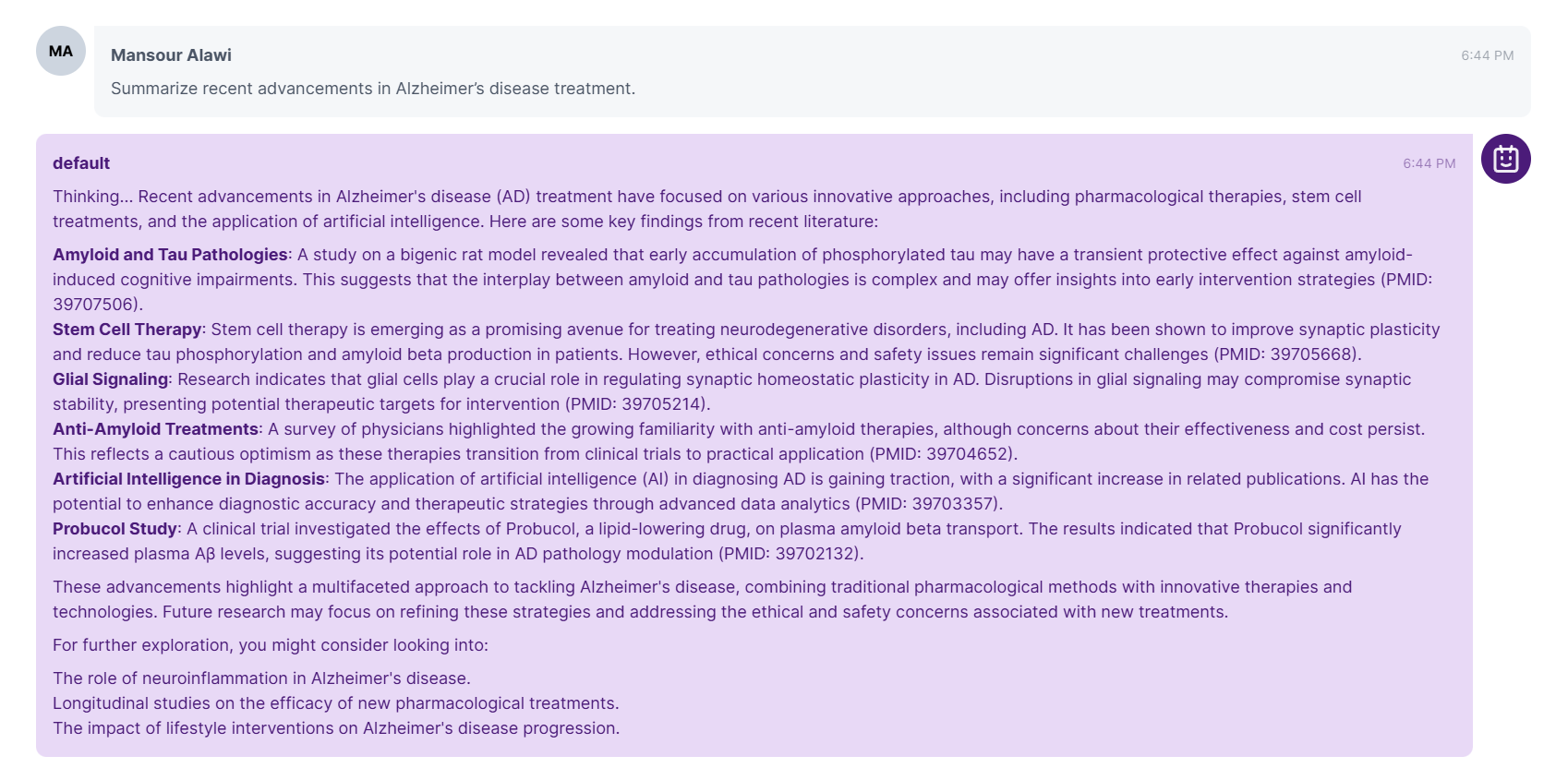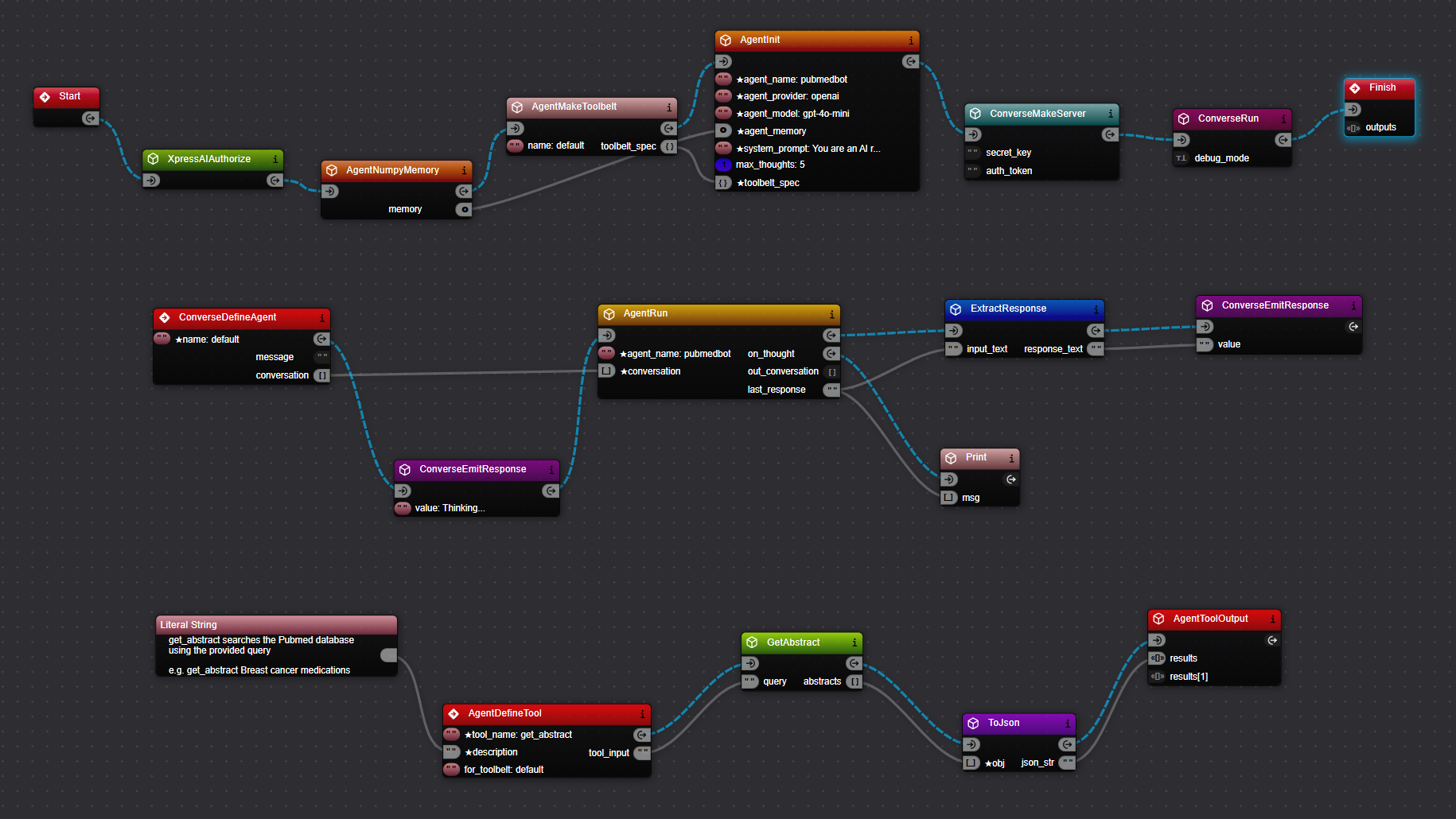Introduction
Retrieval-Augmented Generation (RAG) is transforming how we retrieve and synthesize information by combining AI with real-world data. From summarizing complex topics to answering domain-specific questions, RAG systems provide a powerful way to enhance the relevance and accuracy of outputs.
However, traditional RAG systems often require users to refine search terms manually, struggle with unclear queries, and lack transparency in their responses.
This blog explores how agentic RAG systems solve these challenges. Unlike traditional RAG, agentic systems dynamically adapt their retrieval process in real-time, crafting contextually rich and traceable responses.
While tools like the XpressAI Platform and Xircuits played a role in simplifying the development of such a system, this post touches on the system itself—its capabilities, how it works, and its potential to enhance information retrieval.
What Makes Agentic RAG Different?
An agentic RAG system actively refines its behavior based on both the user’s input and the data retrieved during the process. This dynamic approach makes it far more effective at handling complex or ambiguous queries compared to static RAG systems.
Key Capabilities of an Agentic RAG System:
Dynamic Adaptation:
Adjusts its search strategy in real-time, refining keywords and queries based on initial results to improve relevance.Context-Aware Responses:
Crafts answers that are not only accurate but also consider the context of the query, making them clear and useful.Justified Outputs with Traceability:
Every response includes citations and explanations, ensuring transparency and fostering trust.
Example: Medical Research Use Case
In medical research, where accuracy and source traceability are critical, an agentic RAG system connected to a database like PubMed can:
- Retrieve research papers using initial keywords.
- Refine the query by adding terms like “clinical trials” or “novel therapies” based on results.
- Present an actionable summary with citations to original studies.
For example:
Query: “Summarize recent advancements in Alzheimer’s disease treatment.”
Output:

How We Built the Agentic RAG System
Developing an agentic RAG system involves combining dynamic query refinement, robust data retrieval mechanisms, and clear response formatting. The XpressAI Platform made this process simpler by providing the tools needed to design and deploy such systems efficiently.
Key Components of the System:
Dynamic Query Refinement:
Automatically adjusts search terms based on initial results to improve the relevance of retrieved data.Data Retrieval Tools:
Integrates with domain-specific databases, such as PubMed for medical research, to ensure comprehensive and relevant results. Here’s an example of an information retrieval tool for the PubMed database in Xircuits, which the agent uses to find additional scientific papers related to the query.
Response Synthesis and Formatting:
Converts raw data into structured summaries with references and contextual insights.
By leveraging Xircuits, a visual programming tool within the XpressAI Platform, we could modularize these components, making it easy to customize workflows for different domains without extensive coding as a full agent shown below:

Other Possible Applications of Agentic RAG Systems
Agentic RAG systems are ideal for scenarios requiring precision, adaptability, and traceability. Here are some practical applications:
1. Legal Research
Summarizes relevant case laws and statutes with clear, traceable citations for legal professionals.
2. Financial Analysis
Extracts insights from market reports, providing trends and projections backed by data.
3. Educational Content Generation
Synthesizes summaries from large corpora, helping students and educators quickly access relevant content.
Why Agentic RAG Matters
Traditional tools often rely on static processes and predefined queries, limiting their effectiveness in complex or ambiguous scenarios. Agentic RAG systems overcome these limitations, offering:
- Improved Accuracy: By refining search terms dynamically, the system ensures highly relevant results.
- Greater Transparency: With traceable outputs, users can trust the system’s recommendations.
- Increased Efficiency: Automating query refinement and response synthesis saves significant time and effort.
This adaptability and focus on user needs make agentic RAG systems an essential tool for researchers, professionals, and educators alike.
What’s Next: Join the XpressAI Platform Public Beta
The XpressAI Platform is launching in public beta on December 25, 2024.
This is a great opportunity for developers to explore building intelligent systems like agentic RAG. Whether you’re creating your own retrieval system or automating other workflows, the XpressAI Platform provides the tools to make it happen.
Sign up for early access here and start exploring how intelligent agents can transform your work.
